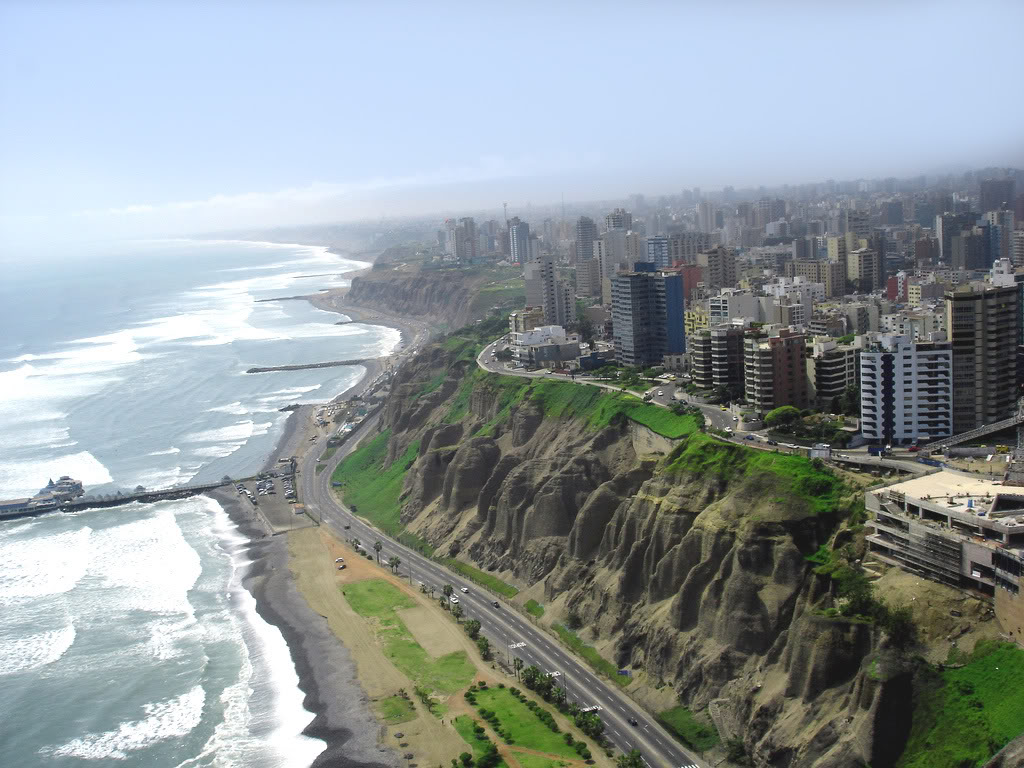
Circuito de playas de la Costa Verde
But like most things in Lima the weather isn't quite what you would expect. Technically Lima is a subtropical coastal desert, its one of the driest capitals in the world; however, its location, nestled between the Pacific Ocean and the Andes, means that the annual climate is mild and warm with very little rainfall. To the west the Humboldt Current, flowing north along the Chilean and Peruvian coast, moderates the heat of the tropical sun while producing humid conditions. While to the east the Andes prevent storms and rain from the Amazon Basin from reaching the coast. Lima has two seasons: warm, sunny, humid summers and cool, cloudy, damp winters; many of the buildings are brightly painted to ward off the grey depression of winter. The city is a series of microclimates that vary between the coastal districts of: San Isidro, Miraflores, Barranco, and Chorrillos to the hotter and drier regions of the interior. In my opinion this leads to a generally unpleasant climate.
For both Limeños and IFSA students life in Lima elicits a lot of complaints: the weather, the traffic, the disorganization, the lack of trust, etc. But strangely enough, many residents love their city and I don't hate it, in fact I might like it a lot. Truly life in Lima is one of the strangest experiences, and nothing exemplifies this better than a Mirabus tour of the city at night.

Now most city bus tours would stick to the biggest and best streets and sites, but not in Lima. Our Mirabus traveled on every type of alley and avenue between Parque Kennedy in Miraflores and the Center of Lima. We made some very tight turns, and even drove through a construction site that was blocked off. The bus makes two stops: the first at the Circuito Magico del Agua and the second at a five star hotel in the city center. The Parque de Aguas opened in 2007 at a cost of US$ 13 M; it is the largest fountain complex in the world with 13 distinct fountains. At night all of the fountains are lighted, and many are interactive. Its a little bit tacky, but entirely awesome!
Trying to get through el Laberinto without getting wet...
Epic Fail...
Túnel de Sorpresas
Grace and beauty in front of the Fuente Mágica
Our second stop was at the Lima Sheraton in the city center was literally the strangest experience. The Mirabus parked outside the glitzy hotel; we tramped in the through the lobby (I was still soaking wet from the Parque de Aguas), past the gourmet buffet, and into specially reserved tables for Mirabus passengers in the dining room. We were fed slightly stale tuna fish mini sandwiches, cheese cake bites, and juice or coffee, and then herded back onto the bus. Super random, but not entirely unenjoyable.
Today Limeños are deciding whether or not to impeach their first female mayor Susana Vilarán; the vote is mandatory, so the entire city has basically shut down. In preparation for the vote there has been a "seca" for the past two days; the sale of alcohol is prohibited. Right now my host family is ordering lunch because leaving the house is near impossible.





Mimi wants you to know that she LOVES the name of your blog! Soak up lots of holiness for us in Ayacucho.
ReplyDelete